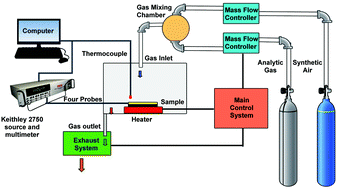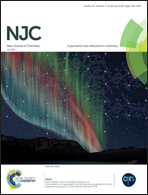Enhancing resistive-type hydrogen gas sensing properties of cadmium oxide thin films by copper doping
Abstract
The pure and Cu-doped CdO thin films with various doping concentrations (0.5 to 2 wt%) were deposited on amorphous glass substrates by a chemical spray pyrolysis technique for hydrogen gas sensor application. The crystallinity, morphology, optical and electrical properties of the CdO thin films were effectively modified by Cu doping. The CdO film exhibited a cubic crystal structure, which is retained after Cu doping with significant changes in the preferential orientation of the crystallographic plane. The SEM and AFM images clearly revealed that the grain size and roughness of the CdO film changed with the Cu doping level. The expected element compositions were initially identified by EDAX and then authentically confirmed by XPS to determine its binding energy states. The optical transmittance and near band edge emission (NBE) bands of the CdO film were significantly decreased by Cu doping level. The minimum resistivity (2.01 × 10−3 Ω cm) as well as good mobility (19.5 cm2 V−1 s−1) and maximum carrier concentration (1.98 × 1020 cm−3) were obtained for the 1 and 0.5 wt% Cu-doped CdO thin films. The Cu-doped CdO thin films exhibit better hydrogen gas sensing behaviour than that of pure CdO film. Finally, it is concluded that the maximum sensitivity is vividly achieved for the Cu-doped CdO thin film at 1 wt%.



 Please wait while we load your content...
Please wait while we load your content...